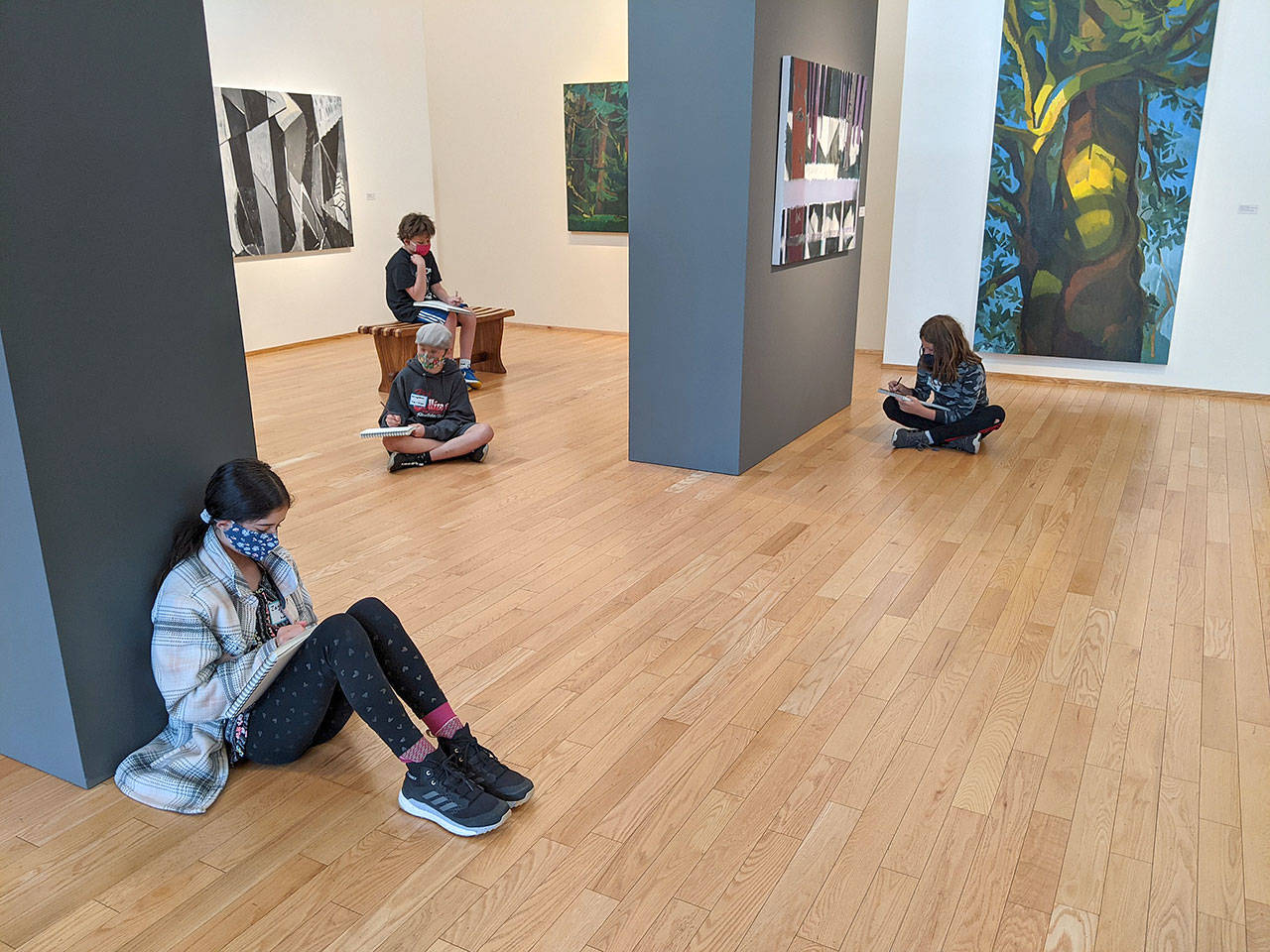With the scorching summer weather setting in along with COVID-19 rates decreasing and vaccination rates increasing, the Bainbridge Island Museum of Art held its first in-person summer camp since 2020 last week.
“It feels really good,” BIMA school & youths programs manager Emma Cantrell said. “We actually had students in camp last summer but we only ran two weeks of camp. Not because there wasn’t interest from the community…but a lot of the instructors we were working with weren’t comfortable commuting over from Seattle or working with kids.
“Now that folks are vaccinated and infection rates are so low, there’s just a lot more comfort around people gathering together. Our maximum size right now with our space is fourteen, which feels really good to have a full class.”
Last week’s Comics: Words & Pictures camp was the start of six weeks of BIMA summer sessions. Each is five days long and is designed by the teaching artist. Cantrell said many students in the comic class had already seen each other in person at school. The students spend all day learning inside and outside doing different interactive activities. They also eat lunch and take breaks together.
COVID protocols consist of wearing masks when indoors; staying 3 feet apart in classrooms and 6 feet elsewhere; along with frequent hand washing and disinfecting.
“One of the benefits of being in a museum is that we have really great air filtration, and our classrooms have windows that can open too,” Cantrell said. “We’re just really lucky to have a space that can accommodate kids safely.”
Last week’s camp has been taught by artist Lin Lucas for the last few years. Lucas is a professional who specializes in performing arts, comics and writing. He also is a co-principal and humanities teacher at Paulo Freire Freedom School in Tucson, AZ. Once the school year ends, he comes up to Bainbridge to teach his summer comics class.
“He really takes a highly professional approach to working with middle schoolers,” Cantrell said. “The rigor of their projects is a really high level. He just puts a lot of trust into what they’re able to accomplish as artists. They’ve been working on some drawing exercises and some conceptualizing, planning out comics, and trying a lot of different techniques.
“Something that’s always been a priority for BIMA, in particular, is hiring professional artists to teach the courses,” Cantrell continued. “In addition to being expert teachers, they have their own art practice where they are able to support students’ creative development even more so than a traditional classroom teacher or an artist without teacher training. They have both superpowers together.”
Lucas said one of the benefits of teaching at BIMA is the full access to the museum and the ability to integrate art into the work and exercises they’re doing. He said he also wants to do a performing arts camp for BIMA in the future.
“There’s something special about having full access to the museum…so the kids can be immersed in whatever the art is,” Lucas said. “I ask them to incorporate it into the stories that they’re making.”
At the beginning of the week, Lucas had his students identify what the anatomy of a comic is and defining what comics are. He mentioned how Simpson’s creator Matt Groening’s comics started out “very crude” but the ideas and content were interesting and witty.
“The kids have this very generic idea of comics…and I like for them to understand that basically, we’re looking at a communication form that uses words and pictures to convey an artist’s idea,” he said. “The idea is the main thing, and the pictures and words are the tools. With all of them coming in at different levels…even if they don’t have the technical skills…everything else will come.”
Throughout the camp, Lucas had the students focus on technical drawing, narrative and reflective elements of what they created. Unlike most comic classes, he said this class is not “product-driven,” meaning students don’t have to have a finished comic by the end of the camp.
“Everything they do, every exercise we do, every brainstorm they have, is collected in a portfolio format,” Lucas said. “My goal is that they have a story outline and thumbnails. If they have that, the rest of it they can do.”


